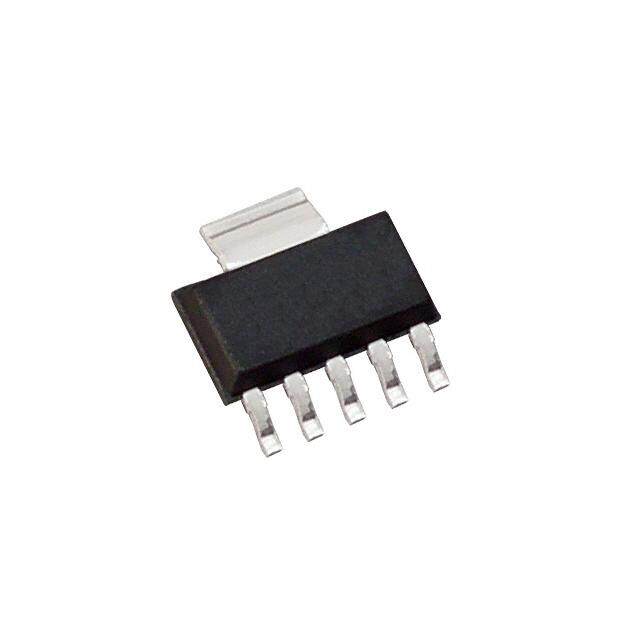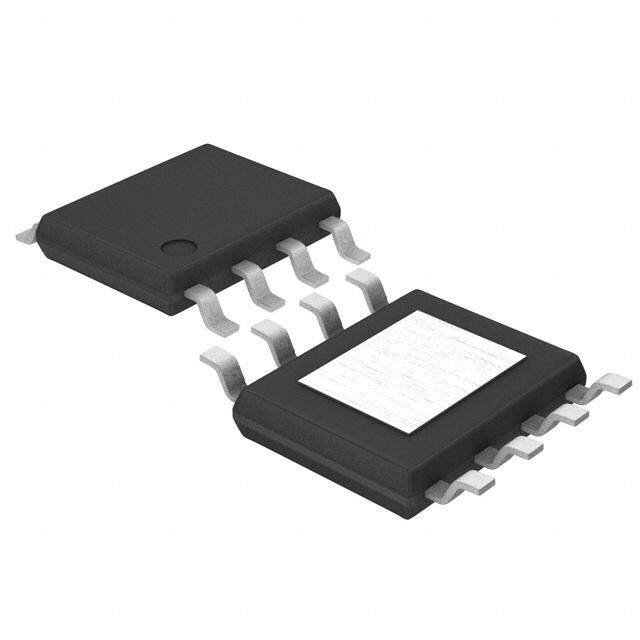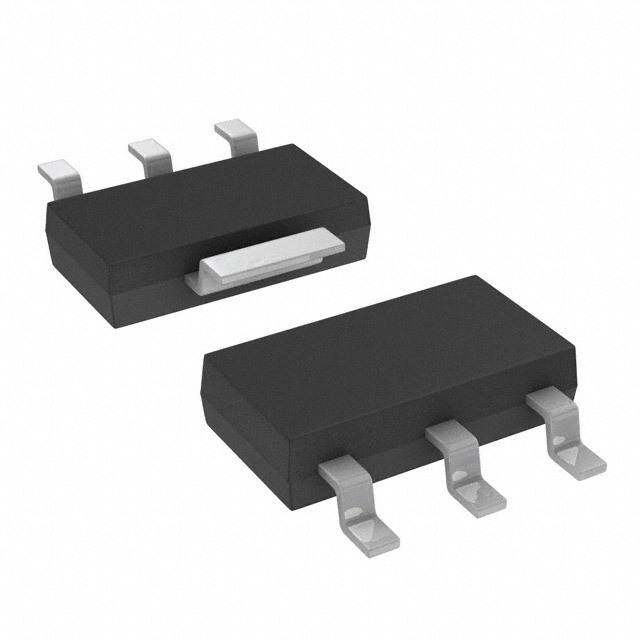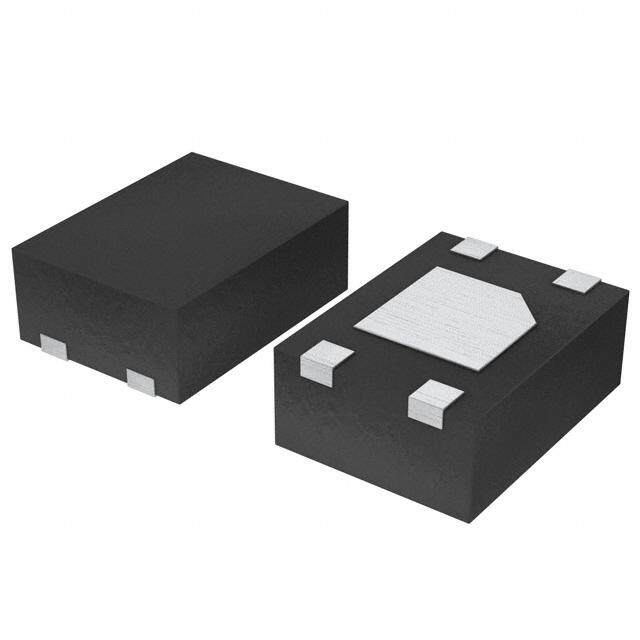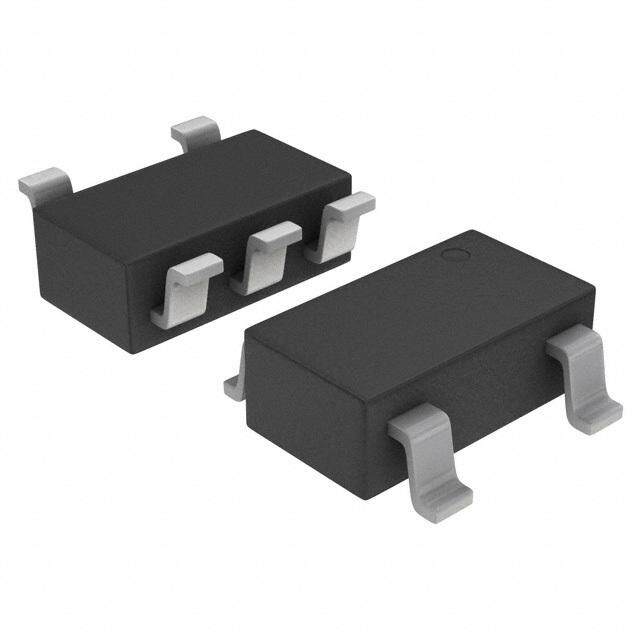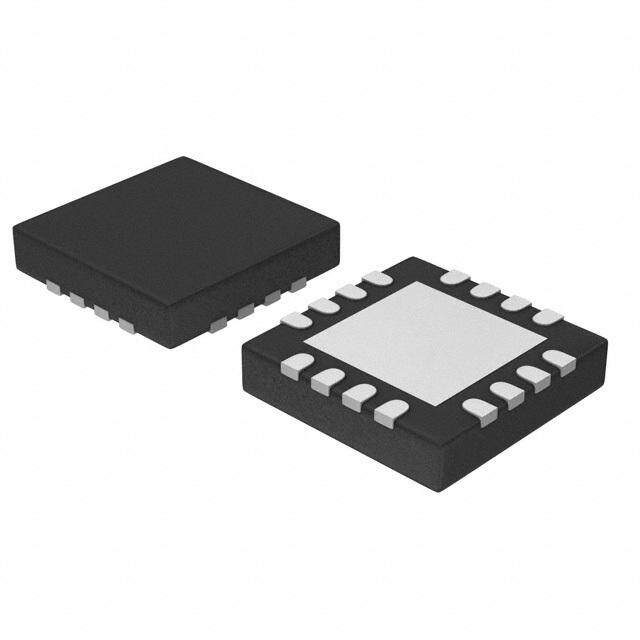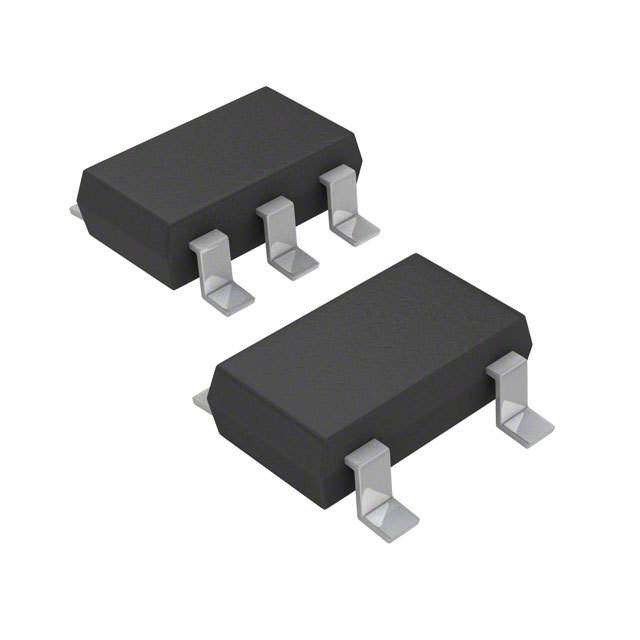ICGOO在线商城 > 集成电路(IC) > PMIC - 稳压器 - 线性 > LTC1844ES5-2.5#TRMPBF
- 型号: LTC1844ES5-2.5#TRMPBF
- 制造商: LINEAR TECHNOLOGY
- 库位|库存: xxxx|xxxx
- 要求:
| 数量阶梯 | 香港交货 | 国内含税 |
| +xxxx | $xxxx | ¥xxxx |
查看当月历史价格
查看今年历史价格
LTC1844ES5-2.5#TRMPBF产品简介:
ICGOO电子元器件商城为您提供LTC1844ES5-2.5#TRMPBF由LINEAR TECHNOLOGY设计生产,在icgoo商城现货销售,并且可以通过原厂、代理商等渠道进行代购。 LTC1844ES5-2.5#TRMPBF价格参考。LINEAR TECHNOLOGYLTC1844ES5-2.5#TRMPBF封装/规格:PMIC - 稳压器 - 线性, Linear Voltage Regulator IC Positive Fixed 1 Output 2.5V 150mA TSOT-23-5。您可以下载LTC1844ES5-2.5#TRMPBF参考资料、Datasheet数据手册功能说明书,资料中有LTC1844ES5-2.5#TRMPBF 详细功能的应用电路图电压和使用方法及教程。
LTC1844ES5-2.5#TRMPBF 是 Linear Technology(现为 Analog Devices)生产的一款线性稳压器,属于 PMIC(电源管理集成电路)类别。它主要应用于需要高效、低噪声、稳定电压输出的场景,适用于各种便携式和电池供电设备。 主要应用场景: 1. 便携式电子设备:如智能手机、平板电脑、可穿戴设备等。这些设备通常对电源效率和体积要求较高,LTC1844 提供了紧凑的封装和高效的电压调节能力,能够有效延长电池寿命。 2. 通信设备:例如无线模块、路由器、调制解调器等。LTC1844 的低噪声特性有助于确保通信信号的稳定性,减少干扰,提升通信质量。 3. 工业控制系统:在工业自动化领域,LTC1844 可以为传感器、执行器和其他控制单元提供稳定的电源,确保系统运行的可靠性和精度。 4. 医疗设备:如便携式医疗仪器、心率监测仪、血糖仪等。LTC1844 的低功耗和高可靠性使其非常适合用于对电源要求严格的医疗应用,确保设备的长时间稳定工作。 5. 汽车电子:在车载信息娱乐系统、导航设备、传感器模块等中,LTC1844 可以提供稳定的电源输出,确保这些设备在不同环境下的正常运行。 特点与优势: - 低静态电流:LTC1844 的静态电流非常低,适合用于对功耗敏感的应用场合,特别是在电池供电设备中,能够显著延长电池寿命。 - 宽输入电压范围:该器件支持较宽的输入电压范围,能够在不同的电源条件下保持稳定输出,适应多种应用场景。 - 低噪声输出:LTC1844 具有极低的输出噪声,特别适合对电源质量要求较高的应用,如射频电路、音频设备等。 - 小型封装:采用紧凑的封装形式,便于在空间有限的设计中使用,适合小型化、集成化的电子产品。 综上所述,LTC1844ES5-2.5#TRMPBF 适用于需要高效、低噪声、稳定电压输出的各种应用场景,尤其是在便携式设备、通信、工业控制、医疗和汽车电子等领域表现出色。
| 参数 | 数值 |
| 产品目录 | 集成电路 (IC) |
| 描述 | IC REG LDO 2.5V 0.15A TSOT23-5 |
| 产品分类 | |
| 品牌 | Linear Technology |
| 数据手册 | http://www.linear.com/docs/5182 |
| 产品图片 |
|
| 产品型号 | LTC1844ES5-2.5#TRMPBF |
| rohs | 无铅 / 符合限制有害物质指令(RoHS)规范要求 |
| 产品系列 | - |
| 产品培训模块 | http://www.digikey.cn/PTM/IndividualPTM.page?site=cn&lang=zhs&ptm=30565 |
| 产品目录页面 | |
| 供应商器件封装 | TSOT-23-5 |
| 其它名称 | LTC1844ES5-2.5#PBF |
| 包装 | 剪切带 (CT) |
| 安装类型 | 表面贴装 |
| 封装/外壳 | SOT-23-5 细型,TSOT-23-5 |
| 工作温度 | -40°C ~ 125°C |
| 标准包装 | 1 |
| 电压-跌落(典型值) | 0.135V @ 150mA |
| 电压-输入 | 最高 6.5V |
| 电压-输出 | 2.5V |
| 电流-输出 | 150mA |
| 电流-限制(最小值) | 160mA |
| 稳压器拓扑 | 正,固定式 |
| 稳压器数 | 1 |







PDF Datasheet 数据手册内容提取
LTC1844 Series 150mA, Micropower, Low Noise, VLDO Linear Regulator FEATURES DESCRIPTIOU ■ Very Low Dropout: The LTC®1844 Series are low noise VLDOTM (very low 90mV at 150mA dropout) linear regulators designed for low power/portable 30mV at 50mA (LTC1844-3.3) applications. These regulators can operate from input ■ Wide Input Voltage Range: 1.6V to 6.5V voltages as low as 1.6V. Typical output noise is only ■ Low 35µA Supply Current, Even in Dropout 30µV and typical dropout for the LTC1844-3.3 is just RMS ■ Low Noise: 60µVRMS (10Hz to 100kHz) 90mV at the maximum load current of 150mA, reducing to ■ ±1.75% Voltage Accuracy Over Temperature, 30mV at 50mA. Voltage and Current Ranges The internal P-channel MOSFET pass transistor requires ■ Fast Transient Response no base current, allowing the device to draw only 35µA ■ 10nA Supply Current in Shutdown during normal operation, independent of the dropout ■ Fixed Output Voltages: 1.5V, 1.8V, 2.5V, 2.8V, 3.3V voltage and load current. The quiescent current falls to a ■ Adjustable Output Voltage: 1.25V to 6V negligible 10nA during shutdown. ■ Output Current Limit ■ Reverse-Battery and Reverse-Current Protection Other features include high output voltage accuracy, ■ No Protection Diodes Needed excellent transient response, stability with ultralow ESR ■ Stable with 1µF Output Capacitor ceramic capacitors as small as 1µF, reverse-battery and ■ Stable with Ceramic Capacitors reverse-current protection, short-circuit and thermal ■ Short-Circuit and Thermal Overload Protection overload protection and output current limiting. ■ Low Profile (1mm) SOT-23 Package The LTC1844 regulators are available in a low profile APPLICATIOU S (1mm) SOT-23 (ThinSOTTM) package. , LTC and LT are registered trademarks of Linear Technology Corporation. ■ Portable Instruments and Battery-Powered Systems VLDO and ThinSOT are trademarks of Linear Technology Corporation. All other trademarks are the property of their respective owners. ■ Bluetooth/802.11 Cards ■ Cellular Phones ■ PDAs and Notebook Computers TYPICAL APPLICATIOU LTC1844-3.3 Dropout Voltage vs Load Current 120 Fixed Voltage Low Noise, VLDO Linear Regulator 100 V) 3.3V TO 6V.5IVN IN OUT V3.O3UVT E (m 80 1µF LTC1844-3.3 1µF TAG OL 60 V OFF ON SHDN BYP T U GND 0.1µF OPO 40 R D 1844 TA01 20 0 0 25 50 75 100 125 150 IOUT (mA) 1844 TA02 1844fa 1
LTC1844 Series ABSOLUTE W AXIW UW RATIU GS (Note 1) Supply Voltage (IN) ....................................... –7V to 7V Output Short-Circuit Duration......................... Indefinite Input Voltage Operating Junction Temperature Range SHDN, BYP, ADJ .................................... –0.3V to 7V (Notes 2, 10).....................................–40°C to 125°C Output Voltage Storage Temperature Range................. –65°C to 150°C OUT........................................................ –0.3V to 7V Lead Temperature (Soldering, 10 sec)..................300°C OUT to IN .................................................. –7V to 7V PACKAGE/ORDER IU FORW ATIOU TOP VIEW TOP VIEW TOP VIEW IN 1 5 OUT IN 1 5 OUT IN 1 5 OUT GND 2 GND 2 GND 2 SHDN 3 4 BYP SHDN 3 4 ADJ BYP 3 4 ADJ S5 PACKAGE S5 PACKAGE S5 PACKAGE 5-LEAD PLASTIC TSOT-23 5-LEAD PLASTIC TSOT-23 5-LEAD PLASTIC TSOT-23 TJMAX = 125°C, θJA = 250°C/W, θJC = 90°C/W TJMAX = 125°C, θJA = 250°C/W, θJC = 90°C/W TJMAX = 125°C, θJA = 250°C/W, θJC = 90°C/W SEE THE APPLICATIONS INFORMATION SECTION SEE THE APPLICATIONS INFORMATION SECTION SEE THE APPLICATIONS INFORMATION SECTION ORDER PART S5 PART ORDER PART S5 PART ORDER PART S5 PART NUMBER MARKING NUMBER MARKING NUMBER MARKING LTC1844ES5-1.5 LTF1 LTC1844ES5-SD LTE8 LTC1844ES5-BYP LTE9 LTC1844ES5-1.8 LTF2 LTC1844ES5-2.5 LTF3 LTC1844ES5-2.8 LTQK LTC1844ES5-3.3 LTF4 Order Options Tape and Reel: Add #TR Lead Free: Add #PBF Lead Free Tape and Reel: Add #TRPBF Lead Free Part Marking: http://www.linear.com/leadfree/ Consult LTC Marketing for parts specified with wider operating temperature ranges. ELECTRICAL CHARACTERISTICS The ● denotes specifications which apply over the full operating temperature range, otherwise specifications are at TA = 25°C. VIN = VOUT + 0.5V, unless otherwise noted. (Note 2) SYMBOL PARAMETER CONDITIONS MIN TYP MAX UNITS V Input Voltage ● 1.6 6.5 V IN IIN Quiescent Current SHDN = VIN 35 55 µA ● 80 µA IINSHDN VIN Shutdown Supply Current SHDN = 0V ● 0.01 1 µA V Regulated Output Voltage LTC1844-3.3 V = 3.8V to 6.5V, I = 0mA to 150mA –1.50 1.50 %V OUT% IN OUT OUT (Notes 3, 4, 5) LTC1844-3.3 V = 3.8V to 6.5V, I = 0mA to 150mA ● –1.75 1.75 %V IN OUT OUT LTC1844-2.8 V = 3.3V to 6.5V, I = 0mA to 150mA –1.50 1.50 %V IN OUT OUT LTC1844-2.8 V = 3.3V to 6.5V, I = 0mA to 150mA ● –1.75 1.75 %V IN OUT OUT LTC1844-2.5 V = 3.0V to 6.5V, I = 0mA to 150mA –1.50 1.50 %V IN OUT OUT LTC1844-2.5 V = 3.0V to 6.5V, I = 0mA to 150mA ● –1.75 1.75 %V IN OUT OUT LTC1844-1.8 V = 2.3V to 6.5V, I = 0mA to 150mA –1.50 1.50 %V IN OUT OUT LTC1844-1.8 V = 2.3V to 6.5V, I = 0mA to 150mA ● –1.75 1.75 %V IN OUT OUT 1844fa 2
LTC1844 Series ELECTRICAL CHARACTERISTICS The ● denotes specifications which apply over the full operating temperature range, otherwise specifications are at TA = 25°C. VIN = VOUT + 0.5V, unless otherwise noted. (Note 2) SYMBOL PARAMETER CONDITIONS MIN TYP MAX UNITS LTC1844-1.5 V = 2.0V to 6.5V, I = 0mA to 150mA –1.50 1.50 %V IN OUT OUT LTC1844-1.5 V = 2.2V to 6.5V, I = 0mA to 150mA ● –2.00 2.00 %V IN OUT OUT LTC1844-1.5 V = 2.0V to 6.5V, I = 0mA to 100mA ● –2.50 2.00 %V IN OUT OUT LTC1844-BYP V = 1.75V to 6.5V, I = 0mA to 150mA –1.50 1.50 %V IN OUT OUT LTC1844-BYP V = 2.2V to 6.5V, I = 0mA to 150mA ● –1.75 1.75 %V IN OUT OUT LTC1844-BYP V = 1.75V to 6.5V, I = 0mA to 100mA ● –3.50 1.75 %V IN OUT OUT LTC1844-SD V = 1.75V to 6.5V, I = 0mA to 150mA –1.50 1.50 %V IN OUT OUT LTC1844-SD V = 2.2V to 6.5V, I = 0mA to 150mA ● –1.75 1.75 %V IN OUT OUT LTC1844-SD V = 1.75V to 6.5V, I = 0mA to 100mA ● –3.50 1.75 %V IN OUT OUT V ADJ Pin Voltage (Notes 3, 5) LTC1844-BYP V = 1.75V to 6.5V, I = 0mA to 150mA 1.233 1.25 1.271 V ADJ IN OUT LTC1844-BYP V = 2.2V to 6.5V, I = 0mA to 150mA ● 1.230 1.274 V IN OUT LTC1844-BYP V = 1.75V to 6.5V, I = 0mA to 100mA ● 1.208 1.274 V IN OUT LTC1844-SD V = 1.75V to 6.5V, I = 0mA to 150mA 1.233 1.25 1.271 V IN OUT LTC1844-SD V = 2.2V to 6.5V, I = 0mA to 150mA ● 1.230 1.274 V IN OUT LTC1844-SD V = 1.75V to 6.5V, I = 0mA to 100mA ● 1.208 1.274 V IN OUT ∆VLNR Line Regulation (Notes 3, 5) LTC1844-3.3 VIN = 3.4V to 6.5V, IL = 1mA ● 4 20 mV LTC1844-2.8 V = 2.9V to 6.5V, I = 1mA ● 4 20 mV IN L LTC1844-2.5 V = 2.6V to 6.5V, I = 1mA ● 4 20 mV IN L LTC1844-1.8 V = 2.2V to 6.5V, I = 1mA ● 4 20 mV IN L V = 1.9V to 6.5V, I = 1mA 4 20 mV IN L V = 1.9V to 6.5V, I = 1mA ● 4 30 mV IN L LTC1844-1.5 V = 2.2V to 6.5V, I = 1mA ● 4 20 mV IN L V = 1.6V to 6.5V, I = 1mA 4 20 mV IN L V = 1.6V to 6.5V, I = 1mA ● 4 80 mV IN L LTC1844-BYP V = 2.2V to 6.5V, I = 1mA ● 4 20 mV IN L V = 1.6V to 6.5V, I = 1mA 4 20 mV IN L V = 1.6V to 6.5V, I = 1mA ● 4 80 mV IN L LTC1844-SD V = 2.2V to 6.5V, I = 1mA ● 4 20 mV IN L V = 1.6V to 6.5V, I = 1mA 4 20 mV IN L V = 1.6V to 6.5V, I = 1mA ● 4 80 mV IN L ∆VLDR Load Regulation (Notes 3, 5) LTC1844-3.3 VIN = 3.8V, IOUT = 0mA to 150mA ● 9 20 mV LTC1844-2.8 V = 3.3V, I = 0mA to 150mA ● 9 20 mV IN OUT LTC1844-2.5 V = 3.0V, I = 0mA to 150mA ● 9 20 mV IN OUT LTC1844-1.8 V = 2.3V, I = 0mA to 150mA ● 9 20 mV IN OUT LTC1844-1.5 V = 2.2V, I = 0mA to 150mA ● 9 20 mV IN OUT V = 2.0V, I = 0mA to 100mA ● 9 40 mV IN OUT LTC1844-BYP V = 2.2V, I = 0mA to 150mA ● 9 20 mV IN OUT V = 1.75V, I = 0mA to 100mA ● 9 50 mV IN OUT LTC1844-SD V = 2.2V, I = 0mA to 150mA ● 9 20 mV IN OUT V = 1.75V, I = 0mA to 100mA ● 9 50 mV IN OUT ∆VDO Dropout Voltage (Notes 6, 7) LTC1844-3.3 IOUT = 50mA ● 30 55 mV I = 150mA ● 90 150 mV OUT LTC1844-2.8 I = 50mA ● 35 60 mV OUT I = 150mA ● 105 165 mV OUT LTC1844-2.5 I = 50mA ● 45 75 mV OUT I = 150mA ● 135 200 mV OUT LTC1844-1.8 I = 50mA ● 85 120 mV OUT I = 150mA ● 230 300 mV OUT 1844fa 3
LTC1844 Series ELECTRICAL CHARACTERISTICS The ● denotes specifications which apply over the full operating temperature range, otherwise specifications are at TA = 25°C. VIN = VOUT + 0.5V, unless otherwise noted. (Note 2) SYMBOL PARAMETER CONDITIONS MIN TYP MAX UNITS LTC1844-1.5 I = 50mA ● 115 160 mV OUT I = 150mA ● 350 450 mV OUT LTC1844-BYP I = 50mA ● 45 75 mV OUT I = 150mA ● 135 200 mV OUT LTC1844-SD I = 50mA ● 45 75 mV OUT I = 150mA ● 135 200 mV OUT I Output Current Limit ● 160 350 mA LIM en Output Voltage Noise f = 10Hz to 100kHz, CBP = 0.1µF, COUT = 10µF, IL = 150mA 60 µVRMS f = 10Hz to 100kHz, CBP = 0.1µF, COUT = 1µF, IL = 150mA 65 µVRMS V SHDN Input Threshold ● 0.35 0.65 0.9 V SHDN tDELAY Shutdown Exit Delay CBP = 0.01µF, COUT = 1µF, No load 70 100 µs CBP = 0.01µF, COUT = 1µF, No load ● 200 µs TSHDN Thermal Shutdown Limit 155 °C ∆TSHDN Thermal Shutdown Hysteresis 10 °C I ADJ Pin Bias Current (Notes 3, 8) ● 30 100 nA ADJ IIRL Input Reverse Leakage Current LTC1844-3.3, LTC1844-2.8, LTC1844-2.5, LTC1844-1.8, ● 200 500 µA LTC1844-1.5, V = –5V, V = 0V IN OUT LTC1844-BYP, LTC1844-SD, VIN = –5V, VOUT = 0V ● 1000 1500 µA IORL Output Reverse Leakage Current VIN = 0V, VOUT = VOUT(NOMINAL) 0.01 0.1 µA (Note 9) VIN = 0V, VOUT = VOUT(NOMINAL) ● 1.2 µA VOSH Start-Up Overshoot RL = 1k, SHDN Rise Time ≤ 1µs 2 %VOUT V Output Ripple Rejection (V – V ) = 1V (Avg), V = 0.5V , 50 dB RP IN OUT RIPPLE P-P f = 120Hz, I = 100mA RIPPLE LOAD Note 1: Absolute Maximum Ratings are those values beyond which the life Note 6: To ensure adequate input supply voltage, the LTC1844 adjustable of a device may be impaired. versions are tested and specified for these conditions with an external Note 2: The LTC1844 is tested and specified under pulse load conditions resistor divider (two 100k resistors) for an output voltage of 2.50V. The such that TJ ≈ TA. The LTC1844E is guaranteed to meet performance external resistor divider will add a 5µA load on the output. specifications from 0°C to 70°C. Specifications over the –40°C to 125°C Note 7: Dropout voltage is (VIN – VOUT) when VOUT falls to 100mV below operating junction temperature range are assured by design, its nominal value measured at V = V + 0.5V. For example, the IN OUT characterization and correlation with statistical process controls. LTC1844-3.3 is tested by measuring the V at V = 3.8V, then V is OUT IN IN Note 3: The LTC1844 adjustable versions are tested and specified for lowered until VOUT falls 100mV below the measured value. The difference these conditions with the ADJ pin connected to the OUT pin for a (VIN – VOUT) is then measured and defined as ∆VDO. V of 1.25V. Note 8: ADJ pin bias current flows into the ADJ pin. OUT(NOMINAL) Note 4: Operating conditions are limited by maximum junction Note 9: Output reverse leakage current is tested with the IN pin grounded temperature. The regulated output voltage specification will not apply for and the OUT pin forced to the rated output voltage. all possible combinations of input voltage and output current. When Note 10: This IC includes overtemperature protection that is intended to operating at maximum input voltage, the output current range must be protect the device during momentary overload conditions. Junction limited. When operating at maximum output current, the input voltage temperature will exceed 125°C when overtemperature protection is active. range must be limited. Continuous operation above the specified maximum operating junction Note 5: The LTC1844’s high precision degrades slightly at high temperature may impair device reliability. temperatures (TJ > 70°C) with input voltages below 2.2V. The lower output voltage versions have been split into higher and lower accuracy input voltage ranges to reflect this. 1844fa 4
LTC1844 Series TYPICAL PERFORW AU CE CHARACTERISTICS V vs Temperature V vs Temperature V vs Temperature OUT OUT OUT 1.520 1.820 2.520 VOUT = 1.5V VOUT = 1.8V VOUT = 2.5V 1.515 1.815 2.515 1.510 1.810 2.510 1.505 1.805 2.505 V) V) V) (UT1.500 (UT1.800 (UT2.500 O O O V V V 1.495 1.795 2.495 1.490 1.790 2.490 1.485 1.785 2.485 1.480 1.780 2.480 –50 –25 0 25 50 75 100 125 –50 –25 0 25 50 75 100 125 –50 –25 0 25 50 75 100 125 TEMPERATURE (°C) TEMPERATURE (°C) TEMPERATURE (°C) 1844 G01 1844 G02 1844 G03 V vs Temperature V vs Temperature V vs Temperature OUT OUT OUT 2.820 3.320 1.270 VOUT = 2.8V VOUT = 3.3V VOUT = ADJ 2.815 3.315 1.265 2.810 3.310 1.260 2.805 3.305 1.255 V) V) V) (UT2.800 (UT3.300 (UT1.250 O O O V V V 2.795 3.295 1.245 2.790 3.290 1.240 2.785 3.285 1.235 2.780 3.280 1.230 –50 –25 0 25 50 75 100 125 –50 –25 0 25 50 75 100 125 –50 –25 0 25 50 75 100 125 TEMPERATURE (°C) TEMPERATURE (°C) TEMPERATURE (°C) 1844 G04 1844 G05 1844 G05 Quiescent Current vs Temperature Current Limit vs Temperature SHDN Threshold vs Temperature 70 500 800 VOUT = 2.8V ILOAD = 1mA 60 750 450 50 A) mV) 700 T (m 400 LD ( 650 I (A)µQ 432000 CURRENT LIMI 330500 HDN THRESHO 650500 S 500 10 250 450 0 200 400 –50 –25 0 25 50 75 100 125 –50 –25 0 25 50 75 100 125 –50 –25 0 25 50 75 100 125 TEMPERATURE (°C) TEMPERATURE (°C) TEMPERATURE (°C) 1844 G07 1844 G08 1844 G09 1844fa 5
LTC1844 Series TYPICAL PERFORW AU CE CHARACTERISTICS RMS Output Noise vs Load Input Ripple Rejection Input Ripple Rejection Current (10Hz to 100kHz) vs Frequency vs Temperature 300 100 60 COUT = 10µF 90 CBYP = 1000pF 250 CBYP = 0µF 80 IL = 100µA 50 OUTPUT NOISE (V)µRMS121005000 CBYP = 0.1µF RIPPLE REJECTION (dB) 246735000000 RIPPLE REJECTION (dB) 234000 50 10 10 0 0 0 0.01 0.1 1 10 100 1000 10 100 1k 10k 100k 1M –50 –25 0 25 50 75 100 125 LOAD CURRENT (mA) FREQUENCY (Hz) TEMPERATURE (°C) 1844 G10 1844 G11 1844 G12 PIU FUU CTIOU S IN(Pin 1): Power for LTC1844 and Load. Power is supplied ADJ (Pin 4, Adjustable Devices): Output Adjust. For the to the device through the IN pin. The IN pin should be adjustable versions of the LTC1844, this is the input to the locally bypassed to ground if the LTC1844 is more than a error amplifier. It has a typical bias current of 30nA flowing few inches away from another source of bulk capacitance. into the pin. The ADJ pin reference voltage is 1.25V In general, the output impedance of a battery rises with referenced to ground. The output voltage range is 1.25V to frequency, so it is usually advisable to include an input 6V and is typically set by connecting ADJ to a resistor bypass capacitor in battery-powered circuits. A capacitor divider from OUT to GND. See Figure 2. in the range of 0.1µF to 1µF is usually sufficient. The BYP (Pin 4, Fixed/Pin 3, BYP Devices): Noise Bypass. LTC1844 is designed to withstand reverse voltages on the The BYP pin is used to augment the internal noise filter to IN pin with respect to both ground and the output pin. In improve low noise performance. A small low leakage the case of a reversed input, which can happen if a battery bypass capacitor from this pin to ground will filter the input is plugged in backwards, the LTC1844 will act as if there of the error amplifier to lower the output voltage noise. is a large resistor in series with its input and only a small Any value may be used; larger values will result in lower amount of current will flow. output noise, but will increase initial power-up time. GND (Pin 2): Ground and Heat Sink. Solder to a ground Shutdown exit delay time after a brief shutdown (<10ms) plane or large pad to maximize heat dissipation. will not be affected. If not used, this pin must be left unconnected. SHDN (Pin 3, Fixed and SD Devices): Shutdown, Active Low. This pin is used to put the LTC1844 into shutdown. OUT (Pin 5): Voltage Regulated Output. The OUT pin The SHDN pin current is typically less than 10nA. The supplies power to the load. A minimum output capacitor of SHDN pin cannot be left floating and must be tied to the 1µF is required to ensure stability. Larger output capacitors input pin if not used. If reverse-battery protection is may be required for applications with large transient loads desired, the SHDN pin must be tied to the input pin through to limit peak voltage transients. See the Applications a large value resistor (10k to 1M). Information section for more information on output capacitance. 1844fa 6
LTC1844 Series APPLICATIOU S IU FORW ATIOU The LTC1844 family are a series of 150mA ultralow Adjustable Operation dropout regulators with micropower quiescent current The adjustable version of the LTC1844 has an output and shutdown. The devices are capable of supplying voltage range of 1.25V to 6V. The output voltage is set by 150mA at a dropout voltage of 90mV (LTC1844-3.3, see the ratio of two external resistors as shown in Figure 2. The Electrical Characteristics for dropout voltage of other device servos the output to maintain the ADJ pin voltage versions). Output voltage noise is as low as 30µV over RMS at 1.25V (referenced to ground). The current in R1 is then a 10Hz to 100kHz bandwidth with the addition of a 0.1µF equal to 1.25V/R1 and the current in R2 is the current in R1 bypass capacitor. The low operating quiescent current plus the ADJ pin bias current. The ADJ pin bias current, (35µA) drops to 10nA in shutdown. 30nA at 25°C, flows through R2 into the ADJ pin. The In addition to the low quiescent current, the LTC1844 output voltage can be calculated using the formula in regulators incorporate several protection features which Figure 2. The value of R1 should be no greater than 1MΩ make them ideal for use in battery-powered systems. The to minimize errors in the output voltage caused by the ADJ devices are protected against both reverse input voltages pin bias current. Note that in shutdown the output is turned and reverse voltages from output to input (reverse current off and the divider current will be zero once C is OUT protection). The devices also include current limit and discharged. thermal overload protection, and will survive an output Adjustable devices are tested and specified with the ADJ short circuit indefinitely. The fast transient response over- pin tied to the OUT pin for an output voltage of 1.25V. comes the traditional tradeoff between dropout voltage, Specifications for output voltages greater than 1.25V will quiescent current and load transient response inherent in be proportional to the ratio of the desired output voltage to most regulators by using a proprietary new architecture 1.25V: V /1.25V. For example, load regulation for an (see Figure 1). OUT VIN = 3V OLTAGEON (V) 00..0024 CCIONU =T =1 µ1FµF VIN IN LTC1844OUT R2 CFF + VOUT UTPUT VDEVIATI–0.020 GND ADJ O –0.04 R1 A) 1844 F02 m RENT ( 50 VOUT=1.25V⎛⎝⎜1+RR21⎞⎠⎟+(IADJ)(R2) R CU 0 VADJ=1.25V AD IADJ=30nA AT 25°C O 0 10 20 30 40 50 60 70 80 90 100 L OUTPUT RANGE = 1.25V TO 6V TIME (µs) CFF RECOMMENDED—SEE TEXT 1844 F01 Figure 1. LTC1844-2.5 Transient Response 1mA to 50mA to 1mA Figure 2. Adjustable Operation 1844fa 7
LTC1844 Series APPLICATIOU S IU FORW ATIOU output current change of 1mA to 100mA is –4mV typical delay can be much shorter (≈70µs) than initial power-up at V = 1.25V. At V = 5V, load regulation is: time if the shutdown duration is brief (<10ms). The OUT OUT maximum shutdown duration required to allow fast shut- (5V/1.25V)(–4mV) = –16mV down exit is determined by the capacitor leakage current, Because the ADJ pin is relatively high impedance (depend- thus a low leakage bypass capacitor is recommended. ing on the resistor divider used), stray capacitance at this Output Capacitance and Transient Response pin can introduce significant phase shift in the error amplifier loop. The PCB layout should be designed to The LTC1844 regulators are designed to be stable with a absolutely minimize the capacitance seen at the ADJ pin. wide range of output capacitors. The ESR of the output To ensure stability over all operating conditions when capacitor affects stability, most notably with small capaci- utilizing large divider resistors, a small feedforward ca- tors. A minimum output capacitor of 1µF with an ESR of pacitor (≈1000pF) in parallel with the upper divider resis- 0.3Ω or less is recommended to ensure stability. The tor (C in Figure 2) is recommended. As an added bonus, LTC1844 is a micropower device and output transient FF this capacitor will improve transient response. response will be a function of output capacitance. Larger values of output capacitance decrease the peak deviations Bypass Capacitance and Low Noise Performance and provide improved transient response for larger load current changes. Note that bypass capacitors used to A bypass capacitor can optionally be connected from the decouple individual components powered by the LTC1844 BYP pin to ground to lower output voltage noise. A good will increase the effective output capacitor value. The quality low leakage capacitor is recommended. This ca- shaded region of Figure 3 defines the region over which pacitor will bypass the input of the error amplifier, provid- the LTC1844 regulators are stable. The maximum ESR ing a low frequency noise pole. The noise pole provided by allowed is 0.3Ω. High ESR tantalum and electrolytic ca- this bypass capacitor will lower the output voltage noise to pacitors may be used, but a low ESR ceramic capacitor as low as 30µV with the addition of a 0.1µF capacitor. RMS must be in parallel at the output. There is no minimum ESR Initial regulator power-up time is inversely proportional to requirement. the size of the bypass capacitor, slowing to 10ms with a Extra consideration must be given to the use of ceramic 0.1µF bypass capacitor and 10µF output capacitor. How- capacitors. Ceramic capacitors are manufactured with a ever, the LTC1844 does not discharge the bypass capaci- variety of dielectrics, each with different behavior across tor when put into shutdown and thus the shutdown exit 0.40 0.35 0.30 0.25 )Ω R (0.20 ES STABLE REGION 0.15 0.10 0.05 0 0.33 1 3.3 10 33 100 OUTPUT CAPACITANCE (µF) 1844 F03 Figure 3. Stability 1844fa 8
LTC1844 Series APPLICATIOUNS INUFORWMATIOUN temperature and applied voltage. The most common di- Additionally, some ceramic capacitors have a piezoelectric electrics used are Z5U, Y5V, X5R and X7R. The Z5U and response. A piezoelectric device generates voltage across Y5V dielectrics are good for providing high capacitances its terminals due to mechanical stress, similar to the way in a small package, but exhibit strong voltage and tem- a piezoelectric accelerometer or microphone works. For a perature coefficients as shown in Figures 4 and 5. When ceramic capacitor the stress can be induced by vibrations used with a 5V regulator, a 10µF Y5V capacitor can exhibit in the system or thermal transients. The resulting voltages an effective value as low as 1µF to 2µF over the operating produced can cause appreciable amounts of noise, espe- temperature range. The X5R and X7R dielectrics result in cially when a ceramic capacitor is used for noise bypass- more stable characteristics and are more suitable for use ing. A ceramic capacitor produced Figure 6’s trace in as the output capacitor. The X7R type has better stability response to light tapping from a pencil. Similar vibration- across temperature, while the X5R is less expensive and induced behavior can masquerade as increased output is available in higher values. voltage noise. LTC1844-2.8 20 BOTH CAPACITORS ARE 16V, COUT = 10µF 1210 CASE SIZE, 10µF CBYP = 0.01µF 0 ILOAD = 100mA %) X5R LUE (–20 500µVV/DOUIVT A V N –40 E I G N A–60 H C Y5V –80 100ms/DIV 1844 F06 –100 0 2 4 6 8 10 12 14 16 DC BIAS VOLTAGE (V) Figure 6. Noise Resulting from Tapping on a Ceramic Capacitor 1844 F04 Figure 4. Ceramic Capacitor DC Bias Characteristics Dropout Recovery and Output Overshoot 40 If the input supply voltage drops too low for the LTC1844 20 to maintain regulation, the internal feedback loop goes into dropout and the internal pass transistor turns fully on. %) 0 X5R E ( If the input supply then suddenly rises, the output may U AL –20 briefly overshoot the intended output voltage while the V GE IN –40 Y5V LTC1844 transitions back from dropout to normal opera- N tion. This behavior occurs when the input supply slew rate A H –60 C is greater than 1V/ms and the output bypass capacitor is –80 BOTH CAPACITORS ARE 16V, small. If the input is expected to slew rapidly, an output –100 1210 CASE SIZE, 10µF bypass capacitor of 10µF or greater should be used to –50 –25 0 25 50 75 100 125 minimize output overshoot. Note that overshoot typically TEMPERATURE (°C) does not occur at start-up since the feedback loop does 1844 F05 not spend a significant amount of time in dropout. Figure 5. Ceramic Capacitor Temperature Characteristics 1844fa 9
LTC1844 Series APPLICATIOUNS INUFORWMATIOUN Thermal Considerations The power dissipated by the device will be equal to: The power handling capability of the device will be limited I (V – V ) OUT(MAX) IN(MAX) OUT by the maximum rated junction temperature (125°C). The where: power dissipated by the device will be the output current multiplied by the input/output voltage differential: IOUT(MAX) = 50mA (IOUT)(VIN – VOUT). VIN(MAX) = 6V The LTC1844 series regulators have internal thermal lim- So: iting designed to protect the device during momentary P = 50mA(6V – 3.3V) = 0.135W overload conditions. For continuous normal conditions, the maximum junction temperature rating of 125°C must The power dissipated by the LTC1844’s quiescent current not be exceeded. It is important to give careful consider- (240µW) is insignificant. The thermal resistance will be in ation to all sources of thermal resistance from junction to the range of 125°C/W to 150°C/W depending on the ambient. Additional heat sources mounted nearby must copper area. The junction temperature rise above ambient also be considered. will be approximately equal to: For surface mount devices, heat sinking is accomplished 0.135W(150°C/W) = 20.3°C by using the heat-spreading capabilities of the PC board The maximum junction temperature will then be equal to and its copper traces. Copper board stiffeners and plated the maximum junction temperature rise above ambient through holes can also be used to spread the heat gener- plus the maximum ambient temperature or: ated by power devices. T = 50°C + 20.3°C = 70.3°C Table 1 lists thermal resistance for several different board sizes and copper areas. All measurements were taken in Protection Features still air on 3/32" FR-4 board with one ounce copper. The LTC1844 regulators incorporate several protection Table 1. Measured Thermal Resistance features which make them ideal for use in battery-powered COPPER AREA THERMAL RESISTANCE circuits. In addition to the usual protection features asso- TOPSIDE* BACKSIDE BOARD AREA (JUNCTION-TO-AMBIENT) ciated with monolithic regulators, such as current limiting 2500mm2 2500mm2 2500mm2 125°C/W and thermal limiting, the devices are protected against 1000mm2 2500mm2 2500mm2 125°C/W reverse input voltages and reverse voltages from output to 225mm2 2500mm2 2500mm2 130°C/W input. 100mm2 2500mm2 2500mm2 135°C/W Current limit protection and thermal overload protection 50mm2 2500mm2 2500mm2 150°C/W are intended to protect the device against current overload *Device is mounted on topside. conditions at the output of the device. For normal opera- tion, the junction temperature should not exceed 125°C. Calculating Junction Temperature The input of the device will withstand input voltages of Example: Given an output voltage of 3.3V, an input voltage –7V. Current flow into the device will be limited to less of 4V to 6V, an output current range of 0mA to 50mA and than 500µA (typically less than 200µA) and only a small a maximum ambient temperature of 50°C, what will the negative voltage will appear at the output (~–300mV with maximum junction temperature be? no load). The LTC1844 will protect both itself and the load against batteries plugged in backward. The shutdown pin will require current limiting if used (see Pin Functions). 1844fa 10
LTC1844 Series APPLICATIOUNS INUFORWMATIOUN In circuits where a backup battery is required, several trying to pull V up. With V held between V OUT OUT OUT(NOM) different input/output conditions can occur. The output and V , I will be at the normal quiescent current level IN IN voltage may be held up externally while the input is either and I will be 1µA to 2µA. As V is pulled above V , OUT OUT IN pulled to ground, pulled to some intermediate voltage or I temporarily increases to 30µA until the reverse cur- OUT left open circuit. The LTC1844 features reverse current rent protection circuitry activates and reduces I to less OUT protection to limit current draw from any supplementary than 10µA. power source at the output. When V is pulled to ground IN Alternatively, when V is held constant and V varied, OUT IN or is left open circuit, I and I are less than 0.1µA for IN OUT current flow will follow Figure 8’s curves. I will be less OUT V = 0V to 7V. OUT than 10µA at all times except for a brief spike just below When V is held constant and V varied, current flow 2.7V before the reverse current protection circuitry IN OUT will follow the curves shown in Figure 7. With V held activates. OUT below V , the LTC1844 will be in current limit OUT(NOM) 50 100 LTC1844-2.8 LTC1844-2.8 IN CURRENT 45 TJ = 25°C 90 TJ = 25°C LIMIT ABOVE 40 VIN = 3.3V 80 VOUT = 2.7V 2.7V CURRENT FLOWS CURRENT FLOW 35 INTO PINS 70 INTO PINS A)µ 30 A)µ 60 T ( IN CURRENT T ( N 25 LIMIT BELOW N 50 E E R 2.8V R R 20 R 40 U U C C 15 30 IOUT IIN IIN 10 20 5 10 IOUT 0 0 0 1 2 3 4 5 6 7 0 0.5 1.0 1.5 2.0 2.5 3.0 OUTPUT VOLTAGE (V) INPUT VOLTAGE (V) 1844 F07 1844 F08 Figure 7. Reverse Current vs Output Voltage Figure 8. Reverse Current vs Input Voltage 1844fa Information furnished by Linear Technology Corporation is believed to be accurate and reliable. 11 However, no responsibility is assumed for its use. Linear Technology Corporation makes no represen- tation that the interconnection of its circuits as described herein will not infringe on existing patent rights.
LTC1844 Series PACKAGE DESCRIPTIOU S5 Package 5-Lead Plastic TSOT-23 (Reference LTC DWG # 05-08-1635) 0.62 0.95 2.90 BSC MAX REF (NOTE 4) 1.22 REF 1.50 – 1.75 3.85 MAX 2.62 REF 1.4 MIN 2.80 BSC (NOTE 4) PIN ONE RECOMMENDED SOLDER PAD LAYOUT 0.30 – 0.45 TYP 0.95 BSC PER IPC CALCULATOR 5 PLCS (NOTE 3) 0.80 – 0.90 0.20 BSC 0.01 – 0.10 1.00 MAX DATUM ‘A’ 0.30 – 0.50 REF 0.09 – 0.20 1.90 BSC NOTE: (NOTE 3) S5 TSOT-23 0302 1. DIMENSIONS ARE IN MILLIMETERS 2. DRAWING NOT TO SCALE 3. DIMENSIONS ARE INCLUSIVE OF PLATING 4. DIMENSIONS ARE EXCLUSIVE OF MOLD FLASH AND METAL BURR 5. MOLD FLASH SHALL NOT EXCEED 0.254mm 6. JEDEC PACKAGE REFERENCE IS MO-193 RELATED PARTS PART NUMBER DESCRIPTION COMMENTS LT1761 100mA, Low Noise LDO in ThinSOT 300mV Dropout Voltage, Low Noise: 20µVRMS, VIN = 1.8V to 20V, ThinSOT LT1762 150mA, Low Noise LDO 300mV Dropout Voltage, Low Noise: 20µVRMS, VIN = 1.8V to 20V, MS8 Package LT1763 500mA, Low Noise LDO 300mV Dropout Voltage, Low Noise: 20µVRMS, VIN = 1.8V to 20V, SO-8 Package LT1764A 3A, Fast Transient Response, Low Noise LDO 340mV Dropout Voltage, Low Noise: 40µVRMS, VIN = 2.7V to 20V, TO-220 and DD Packages LT1962 300mA, Low Noise LDO 270mV Dropout Voltage, Low Noise: 20µVRMS, VIN = 1.8V to 20V, MS8 Package LT1963A 1.5A Low Noise, Fast Transient Response LDO 340mV Dropout Voltage, Low Noise: 40µVRMS, VIN = 2.5V to 20V, TO-220, DD, SOT-223 and SO-8 Packages LT1964 200mA, Low Noise, Negative LDO 340mV Dropout Voltage, Low Noise 30µVRMS, VIN = –1.8V to –20V, ThinSOT LT3150 Fast Transient Response, VLDO Regulator 0.035mV Dropout Voltage via External FET, V : 1.3V to 10V IN Controller 1844fa 12 Linear Technology Corporation LT/TP 0905 REV A • PRINTED IN USA 1630 McCarthy Blvd., Milpitas, CA 95035-7417 (408) 432-1900 ● FAX: (408) 434-0507 ● www.linear.com © LINEAR TECHNOLOGY CORPORATION 2003

 Datasheet下载
Datasheet下载

